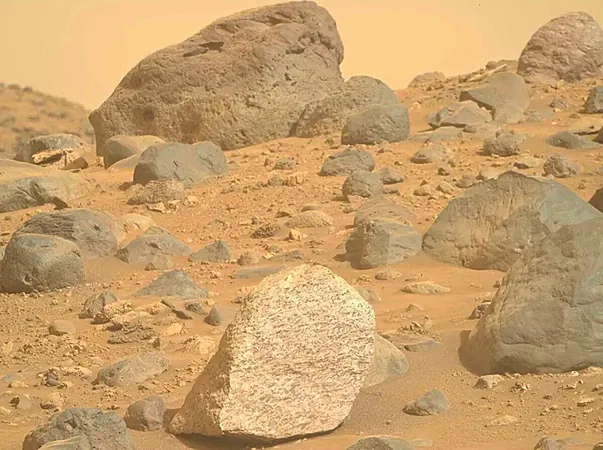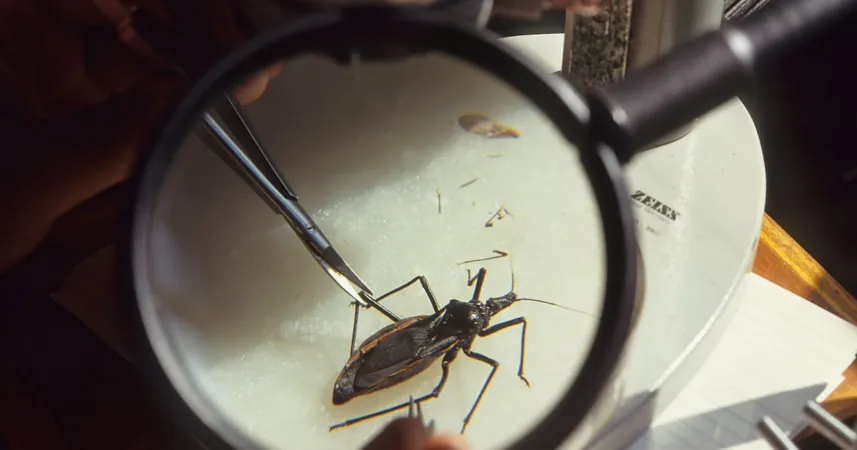
Could Mars Have Harbored Microbial Life? New Evidence Emerges!
2025-09-14
Author: Charlotte
A groundbreaking study led by Dr. Michael Tice from Texas A&M University reveals tantalizing clues about ancient life on Mars. The research links potential chemical signatures to microbial activity, discovered within the rocks sampled by NASA's Perseverance rover.
Exploring the Bright Angel Formation
Focusing on a region called the Bright Angel formation in Jezero Crater, named after locations in the Grand Canyon, scientists have uncovered fine-grained mudstones that suggest an ancient Martian environment rich in oxidized iron, phosphorus, sulfur, and notably, organic carbon. While organic carbon has been previously identified on Mars, this specific blend of materials could point toward a rich energy source for early life forms.
Dr. Tice expressed excitement about the differences observed in these rocks compared to prior findings: "The compositions were strikingly unique, indicating processes that could support life as we know it. Chemical cycles on Earth that provide energy could also have played a role here. But we need to conduct further experiments back on Earth to unravel these mysteries fully."
A Glimpse into Mars’s Water-Rich Past
The sedimentary rocks of the Bright Angel formation have a history tied to water, showcasing signs of flowing rivers and lakes. Instruments aboard Perseverance, including SHERLOC and PIXL, detected organic molecules and minerals resulting from redox reactions—chemical interactions often influenced by life.
Among the notable features are tiny spherical structures and reaction fronts, dubbed "poppy seeds" and "leopard spots" by the rover team, which are believed to be formed in environments favorable to microbial life.
Is Organic Matter a Sign of Life?
The SHERLOC instrument has detected a unique signature of organic carbon, primarily at the "Apollo Temple" site, where the minerals vivianite and greigite were notably concentrated. Dr. Tice emphasizes the intriguing implication: the presence of organic matter and redox-sensitive minerals suggests a potential link to biological processes.
However, he clarifies that organic does not definitively indicate life: "It can come from both biological and abiotic processes. The organic matter found might have resulted from non-living sources, or it could be remnants of Martian life, altered by chemical reactions and radiation over billions of years."
The Quest for Answers
The research outlines two scenarios regarding the formation of these minerals: one suggests geochemical processes without life, while the other posits microbial involvement. Interestingly, current geochemical models indicate that the necessary high-temperature conditions were absent in these rocks, pushing the hypothesis toward past microbial activity.
While these findings do not serve as conclusive proof of past life, they do meet NASA's standards for potential biosignatures, warranting further investigation.
A Sample to Change Everything
Perseverance has collected a sample from the Bright Angel formation, dubbed "Sapphire Canyon," now safely stored in a sealed tube. This sample is earmarked for a future mission to Earth, where scientists will scrutinize it using advanced instruments.
Dr. Tice notes the significance of this potential return: "We could analyze the isotopic makeup, explore mineral compositions, and even search for microfossils, offering deeper insights into ancient Martian ecosystems. It's wonderful to think that life may have exploited similar environmental processes on both planets at the same time."









 Brasil (PT)
Brasil (PT)
 Canada (EN)
Canada (EN)
 Chile (ES)
Chile (ES)
 Česko (CS)
Česko (CS)
 대한민국 (KO)
대한민국 (KO)
 España (ES)
España (ES)
 France (FR)
France (FR)
 Hong Kong (EN)
Hong Kong (EN)
 Italia (IT)
Italia (IT)
 日本 (JA)
日本 (JA)
 Magyarország (HU)
Magyarország (HU)
 Norge (NO)
Norge (NO)
 Polska (PL)
Polska (PL)
 Schweiz (DE)
Schweiz (DE)
 Singapore (EN)
Singapore (EN)
 Sverige (SV)
Sverige (SV)
 Suomi (FI)
Suomi (FI)
 Türkiye (TR)
Türkiye (TR)
 الإمارات العربية المتحدة (AR)
الإمارات العربية المتحدة (AR)